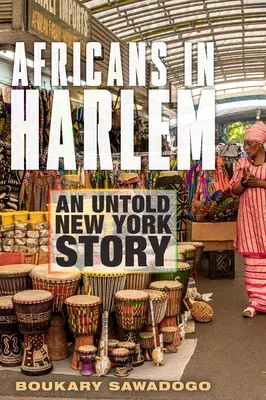The untold story of African-born migrants and their vibrant African
influence in Harlem.
From the 1920s to the early 1960s, Harlem was the intellectual and
cultural center of the Black world. The Harlem Renaissance movement
brought together Black writers, artists, and musicians from different
backgrounds who helped rethink the place of Black people in American
society at a time of segregation and lack of recognition of their civil
rights. But where is the story of African immigrants in Harlem's most
recent renaissance? Africans in Harlem examines the intellectual,
artistic, and creative exchanges between Africa and New York dating back
to the 1910s, a story that has not been fully told until now.
From Little Senegal, along 116th Street between Lenox Avenue and
Frederick Douglass Boulevard, to the African street vendors on 125th
Street, to African stores, restaurants, and businesses throughout the
neighborhood, the African presence in Harlem has never been more active
and visible than it is today. In Africans in Harlem, author, scholar,
writer, and filmmaker Boukary Sawadogo explores Harlem's African
presence and influence from his own perspective as an African-born
immigrant. Sawadogo captures the experiences, challenges, and problems
African émigrés have faced in Harlem since the 1980s, notably work,
interaction, diversity, identity, religion, and education. With a keen
focus on the history of Africans through the lens of media, theater, the
arts, and politics, this historical overview features compelling
character-driven narratives and interviews of longtime residents as well
as community and religious leaders.
A blend of self-examination as an immigrant member in Harlem and
research on diasporic community building in New York City, Africans in
Harlem reveals how African immigrants have transformed Harlem
economically and culturally as they too have been transformed. It is
also a story about New York City and its self-renewal by the
contributions of new human capital, creative energies, dreams nurtured
and fulfilled, and good neighbors by drawing parallels between the
history of the African presence in Harlem with those of other ethnic
immigrants in the most storied neighborhood in America.

